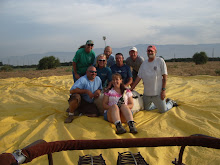In the car driving home...
...kids watching a DVD
...headphones on...
..."Mom!"
..."Yes?"
..."What is sosz?"...
..."Sauce?"
..."No! Sauz!"...
(long pause from Mom)... "Well, it is... (chuckle) I don't know. What is happening in the movie?"
Tierney: "S....O....S Mom."
Mom: "Ohhhhhh... well that means distress, needing help...."
Mom thinking to herself... "S.O.S... what does S.O.S stand for?"
Anyone know? I'm stumped! Post comments below.
Mexican Chocolate Sheet Cake
8 years ago








1 comment:
SOS is the commonly used description for the International Morse code distress signal (· · · — — — · · ·). This distress signal was first adopted by the German government in radio regulations effective April 1, 1905, and became the worldwide standard when it was included in the second International Radiotelegraphic Convention, which was signed on November 3, 1906, and became effective on July 1, 1908.
From the beginning, the SOS distress signal has actually consisted of a continuous sequence of three-dits/three-dahs/three-dits, all run together without letter spacing. In International Morse Code, three dits form the letter S, and three dahs make the letter O, so "SOS" became an easy way to remember the correct order of the dits and dahs. In modern terminology, SOS is a "procedural signal" or "prosign", and the formal way to write it is with a bar above the letters, i.e. SOS.
In popular usage, SOS became associated with phrases such as "Save Our Ship", "Save Our Souls", "Save Our Skins", "Save Our Stuff", "Shoot Our Ship", "Shoot On Sight", "Sinking Our Ship", "Survivors On Shore", "Save Our Seamen", and "Signal On Sand". It is mostly known by "Save Our Ship" and/or "Save Our Souls". However, these phrases were a later development, most likely used to help remember the correct letters—something known as a backronym.
Post a Comment